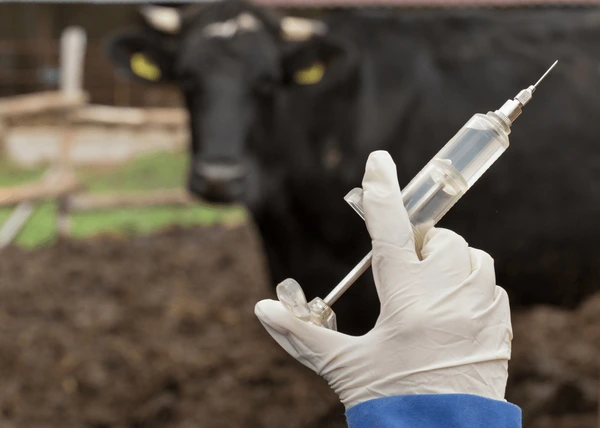
Infertility can be defined as the inability to conceive a child within a 12-month timeframe, affecting men and women equally.1 Said condition affects approximately 12% of the American population, or 7.3 million people, and has influenced a precipitous decline in fertility rate.1(763) As a means of exploring natural interventions to improve fertility, the following will consider endocrine disrupting chemicals (EDCs), nutrition, and exercise as support systems for improving the same.
Since 2008, the Endocrine Society has been convening with a group of experts to review and consider the pathophysiological effects of EDCs emanating from the environment (food, air, water, household chemicals, plastics etc.).2(2) The most researched EDCs include bisphenol A (BPA), phthalates, herbicides, pesticides, and industrial chemicals to include polychlorinated biphenyls (PCBs) and polybrominated diethyl ethers.2(2) Such EDCs have a broad range of effects on organ systems to include the reproductive organs.1(2) Most research has considered the interactions of EDCs on estrogen receptors, however, recent evidence has implicated the effects of EDCs upon other nuclear receptors to include glucocorticoid (involved in maintenance of basal and stress-related homeostasis) and peroxisome proliferative-activated receptors (involved in diverse metabolic functions such as fatty acid oxidation and cholesterol metabolism).2(2),3,4

Most relevantly, evidence has suggested that EDCs are lowering quality of life, increasing susceptibility to cancers, and inducing endocrine diseases in humans.2(3) Ultimately, EDCs are playing a critical role in disease cause/progression to include impaired thyroid function, impaired metabolism, increased risk of cancers, and impaired reproductive function2(3). Reproductively, EDCs can affect structure and function of female sexual organs (uterus, vagina, anterior pituitary) to include impaired ovarian development.2(4) Simple interventions to help lower EDCs include filtering water. Water filtration can be an effective means of filtering out heavy metals like arsenic, as well as nitrates from agricultural fertilizers; such a substance can convert iron 2+ (Fe2+) to Fe3+ negatively effecting oxygen transport in hemoglobin.5 Water filters can also help capture cadmium; a heavy metal known to cause kidney damage and cancer.1(718) Avoidance of plastic bottles and food containers in favor of stainless steel and glass can also help reduce BPA exposure.

Large farms which raise animal produce tend to use sex hormones to improve protein synthesis, degrade fat, and improve the sensory profile.6 However, such hormones are transmitted to edible tissues and fluids, which are found in final products consumed by humans.6(502) Furthermore, sex hormones used in animal farming does not dissipate/deactivate after cooking at high temperatures ensuring its successful transmission to the consumer.6(505) Said hormones include estradiol and its esters; substances that tend to be high (androgen excess) amongst human females with infertility issues.7
Grass fed/grass finished meat, and organic agriculture at large, generally have lower pesticide/chemical fertilizer/antibiotic/sex hormone content and more favorable fatty acid profiles among livestock; organically raised animals tend to have higher concentrations of omega-3 fatty acids (O3FAs) in addition to total polyunsaturated fatty acids (PUFAs).8 Furthermore, said animals also have higher levels of eicosapentaenoic acid (EPA), docosahexaenoic acid (DHA), conjugated linoleic acid (CLA), alpha-linolenic acid (ALA), and vaccenic acid (VA).8(705),9 Other nutrients that remain significantly higher in organic livestock include vitamin C and vitamin E; antioxidants that help manage oxidative stress and immune system strength.10

Exercise is another important element in supporting fertility, especially amongst females with polycystic ovarian syndrome; a condition characterized by a hyperandrogenic state.11 Such individuals tend to be obese and insulin resistant, which are two conditions known to supress ovulation.11(2) Of particular interest is that females who took fertility drugs and exercised regularly experienced improved metabolic and reproductive effects compared to females using fertility drugs as a stand-alone modality.11(9)
In conclusion, infertility can be defined as the inability to conceive a child within a 12-month timeframe, affecting men and women equally. Said condition affects approximately 12% of the American population, or 7.3 million people, and has influenced a precipitous decline in fertility rate. However, awareness and minimization of EDC exposure, optimizing nutrition, and increasing physical activity can help support fertility, especially when used concomitant fashion.
References
1. Kohlstadt I. Advancing Medicine with Food and Nutrients. 2nd ed. London, NY: CRC Press; 2012.
2. Gore AC, Chappell A, Fenton SE, et al. Executive summary to EDC-2: The Endocrine Society’s second scientific statement on endocrine-disrupting chemicals. Endocr Rev. 2015;36(6):1-10. doi:10.1210/er.2015-1093.
3. Oakley RH, Cidlowski JA. The biology of the glucocorticoid receptor: New signaling mechanisms in health and disease. J Allergy Clin Immunol. 2013;132(5):1033-1044. doi: 10.1016/j.jaci.2013.09.007.
4. Tyagi S, Gupta P, Saini AS, et al. The peroxisome proliferator-activated receptor: A family of nuclear receptors role in various diseases. J Adv Pharm Technol Res. 2011;2(4):236-240. doi: 10.4103/2231-4040.90879.
5. Pourjamali R, Sadrabad EK, Hashemi SA, et al. Evaluation of point-of-use drinking water treatment systems efficiency in reducing or removing physiochemical parameters and heavy metals. JEHSD. 2019;4(1):717-726. doi.org/10.18502/jehsd.v4i1.490.
6. Pleadin J, Samardzija M. Hormonally active substances in the food chain from farm animals to consumers. Veterinarska Stanica. 2019;50(6):501-512. https://www.researchgate.net/publication/337544647_Hormonally_active_substances_in_the_food_chain_from_farm_animals_to_consumers. Published November, 2019. Accessed March 31, 2020.
7. Gilani STA, Nisa BU, Raheem I, et al. Disorders leading to infertility in males and females. Pak Armed Forces Med. 2020;70(1):S95-S100. https://www.pafmj.org/index.php/PAFMJ/article/view/3802. Published January 27, 2020. Accessed March 31, 2020.
8. Hurtado-Barroso S, Tresserra-Rimbau A, Vallverdu-Queralt A, Lamuela-Raventos, M. Organic food and the impact on human health. Crit Rev Food Sci Nutr. 2019;59(4): 709-714. doi: 10.1080/10408398.2017.1394815.
9. Hafla AN, MacAdam JW, Soder KJ. Sustainability of US organic beef and dairy production systems: Soil, plant, and cattle interactions. Sustainability. 2013;5:3009-3034. doi: 10.3390/su5073009.
10. Gropper SS, Smith, JL, Carr TP. Advanced Nutrition and Human Metabolism. 7th ed. Boston, MA: Cengage Learning; 2018.
11. Legro RS, Dodson WC, Kris-Etherton PM, et al. Randomized controlled trial of preconceptinon interventions in infertile women with polycystic ovary syndrome. J Clin Metab. 2015;100(11):1-11. doi:10.1210/jc.2015-2778.
-Michael McIsaac
